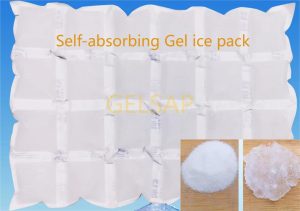Ice packs are widely used for a variety of purposes, from relieving pain and swelling to keeping food and beverages chilled. If you’ve ever wondered what exactly is inside ice packs and if the gel inside is toxic, this post is for you. We’ll dive into the composition of ice packs and address common concerns regarding their safety.
What’s Inside Ice Packs?
Ice packs come in different forms, primarily consisting of either solid or gel substances. Traditional ice packs are filled with water that freezes, while many modern ice packs contain a gel that maintains cold temperatures longer and remains flexible when frozen.
What is in Гелевые пакеты для льда?

Gel ice packs are filled with a thick, gel-like substance designed to retain cold efficiently. This gel typically comprises water mixed with a thickening agent such as silica, cellulose, or polyacrylate. Some gel ice packs also include antifreeze agents like propylene glycol to keep the gel from freezing solid, allowing the pack to stay pliable.
Is the Gel Inside an Ice Pack Toxic?
The gel inside most commercial ice packs is generally non-toxic, but it’s not meant to be ingested. The primary components—cellulose, silica, and similar materials—are safe for external use. However, some gel packs may contain additives that could be harmful if consumed in large amounts. It’s crucial to check the packaging for specific safety information and avoid puncturing the ice pack.
What is in Ice Packs?
Beyond gel ice packs, some ice packs contain a water-salt mixture. The salts lower the water’s freezing point, allowing the pack to remain cold for extended periods. This type of ice pack is particularly common in medical settings, where they are used to reduce swelling and alleviate pain.
Safety Tips for Using Ice Packs
- Check Labels: Always read the label or packaging for safety instructions and warnings.
- Do Not Ingest: Never ingest the contents of an ice pack, even if it’s labeled as non-toxic.
- Dispose Properly: If an ice pack leaks or is punctured, dispose of it according to the manufacturer’s guidelines.
- Use Appropriately: Follow the instructions for the intended use, whether it’s for pain relief or keeping items cool, to avoid potential risks.
Заключение
Ice packs are versatile tools for cooling and treating injuries. Knowing what’s inside ice packs and understanding that the gel is typically non-toxic can help ensure safe usage. Whether you opt for a traditional water-based ice pack or a gel ice pack, these items are designed to provide convenient and effective cooling. Handle them with care, follow safety instructions, and enjoy their benefits with peace of mind.

